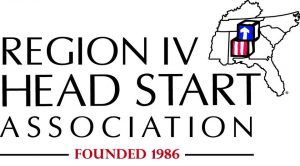DRS: An Overview and Approach for Success in Strategic Grant Writing
DRS is time-consuming, complicated, and nerve wracking!
If your service area is up for re-competition, your agency can compete for funding – and be successful.
Foundations for Families has prepared successful proposals for every round of DRS – you can learn from our experience.
Get an overview of the DRS application process, along with proven tips and strategies taken from successful grant applications.
Download the slides


Thank you for joining Foundations for Families at the 2022 Annual Training Conference and Expo!
10 Ways to Efectively Respond to the DRS FOA.
1. Know when the FOA is available. Review the ACF forecast.
2. Recognize it when you see it. Download a prior DRS FOA and study the criteria.
3. Prepare to upload your application. Register and get ready at least 1 month before your FOA opens.
4. Assign someone to the pre-FOA activities. Find a detail-oriented person who gets things done.
5. Assign people to key roles for grant writing. Consider strengths and seniority when you assign key roles.
6. Confirm your program design. Commit to strategic planning in order to design a program that serves community needs.
7. Identify what you do well to support children and families. Talk to potential partners now.
8. Create real budgets with a realistic provider payment rate. Develop realistic and comprehensive budgets to meet the program design for the grantee (and partners, if applicable).
9. Identify changes to your program design or approach that will help better support children and families. Show your community what you can do for them.
10. Get appropriate permission to apply for funding. Policy Council and Governing Board approval is imperative!

DRS Updates provides timely information and context for those agencies in DRS, at risk of being in DRS, or those wishing to compete for the service areas.
Develop your strategy for DRS
Here are a few of the factors that can make a big difference in the process and quality of your DRS proposal submission.
- Have a clear leader. Identify your DRS leader now – someone who will manage the DRS proposal from brainstorming to submission. This person is detail oriented and will serve as project manager and lead writer. The DRS leader has their eyes on all pieces of the proposal to ensure your program doesn’t drop the ball.
- Adhere to a detailed proposal development timeline. A clear timeline significantly reduces the stress level for everyone during proposal development. The more details, the better. Our approach uses a day-to-day timeline, leveraging every day of the approximately 60-day turnaround. Include benchmarks for proposal development, such as gathering data, drafting narrative, securing Board and Governing Body approvals, and appendix development. As part of your timeline, establish a regular DRS meeting schedule.
- Involve key content managers.The DRS leader needs to know who to involve and when. When key content managers are engaged throughout the process, the DRS proposal narrative has rich, detailed content. In every round of DRS, it has paid off clearly state in your narrative how the pieces of your program design fit together .
- Have current, high-quality data to inform your proposal. In the past, the DRS FOA has required programs to provide a substantial amount of data, particularly in the Demonstration of Need section of the proposal. In this section, you’ll need to write about the children and families in your proposed service area, including demographics, priority populations, community health factors, and other data. Most of that data can be found in your most recent Community Assessment.
- Know your program policies and procedures. Throughout the FOA, you’ll be asked to write about areas of your program that should be established in your program policies and procedures. Programs with comprehensive policies and procedures in place generally have an easier time writing about current and future program operations. Program policies and procedures will apply to describing services to children with disabilities, screening and assessment practices, evaluation of staff, and fiscal accountability.
Are you afraid to share information about DRS status with staff, program leadership, and community partners? Learn what to do.
Grant writing exceeded our expectations.
We also developed internal capacity through the modeling and coaching provided by Foundations for Families. We have an excellent DRS application – awaiting results. [This grant was awarded.]
Foundations for Families removed the anxiety from the process. Your approach was strengths-based. This helped us focus on the positive components of our program.
Very satisfied with the process and the end results!
[FFF] established a system which created teamwork divided upon application requirements.
It was systematically planned and thoroughly implemented; whereby a tremendous amount of growth, team building, and capacity building were realized.
The Office of Head Start Regional program and finance officials commented that the quality of our proposal was among the most well written and noted how clearly and succinctly the narrative and budget sections aligned.
They indicated that because of the quality of the proposal, it was being fast tracked for funding and startup.
